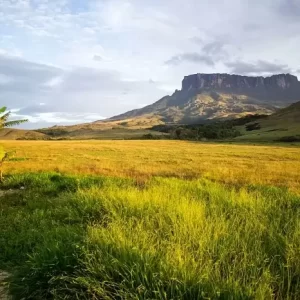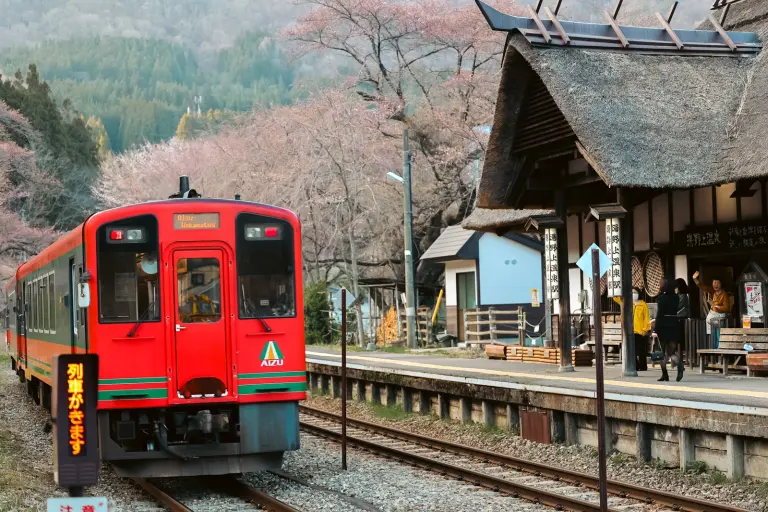While Iceland is globally renowned for its Northern Lights, its extraordinary glacial ice caves are equally captivating and among the country’s most sought-after natural wonders.
With towering snow-covered mountains, frozen waterfalls, and colossal drifting icebergs, Iceland is a haven for nature lovers. Among its countless glacial marvels, the Crystal Ice Cave stands out like a scene from a fantasy world.
Crystal Ice Cave – Nature’s Blue Cathedral
Located within the Svínafellsjökull Glacier, a glacier tongue extending from the Vatnajökull ice cap, the Crystal Ice Cave lies on the flanks of the active volcano Öræfajökull. It forms part of the Skaftafell region, now absorbed into Vatnajökull National Park, the largest protected area in Europe.
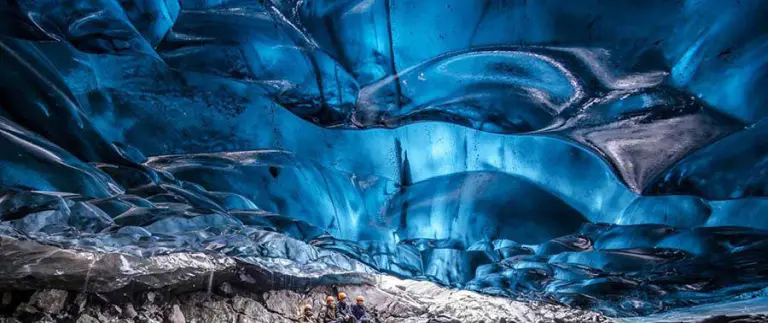
What makes this cave truly mesmerizing is its vivid blue ice — a result of centuries of glacial compression. The immense weight of accumulated snow has squeezed out all air bubbles, allowing light to penetrate and reflect only the purest shades of blue. It’s this phenomenon that gives the cave its jewel-like glow and almost glassy appearance.
However, these ice caves are only safe to visit during the coldest winter months, when the ice becomes dense and stable. The stillness inside is often interrupted by cracking sounds from the shifting glacier above, adding a raw, thrilling energy to the experience.
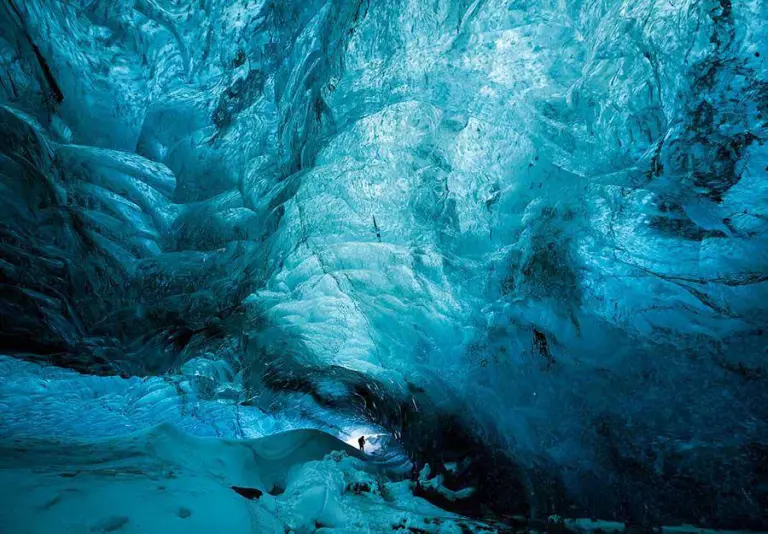
>> Chasing the Aurora: The best time to visit Iceland for Northern Lights
Beyond the Crystal Cave – Exploring Vatnajökull’s Hidden Treasures
Although the Crystal Ice Cave has become one of Iceland’s most iconic attractions, its growing popularity can sometimes lead to overcrowding, slightly diminishing the sense of solitude and wonder.
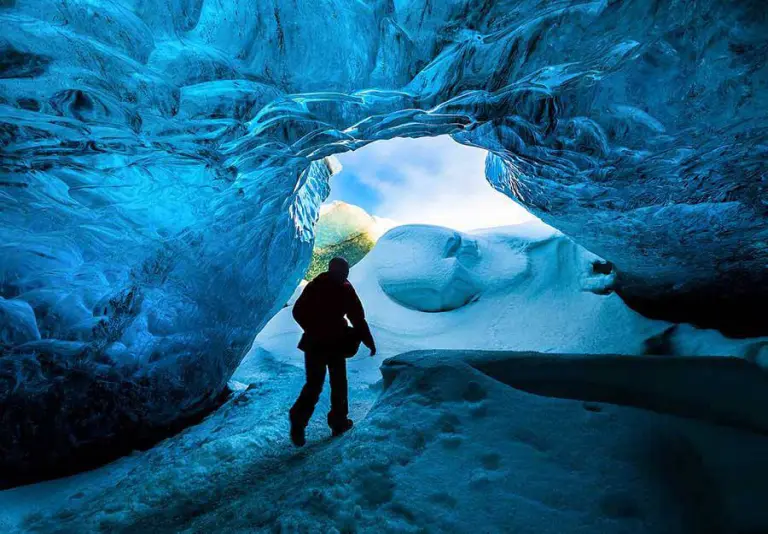
Thankfully, Vatnajökull Glacier, which spans over 8,000 km², is home to a vast network of lesser-known ice caves. These hidden gems offer equally stunning encounters with nature, minus the crowds. Within this icy underworld, adventurers can wander through frozen tunnels, marvel at thick glassy walls, and soak in shimmering hues of blue, silver, and pearlescent white.
Every turn reveals surreal patterns sculpted by nature — a short walk that evokes a flood of emotions, from awe to serenity.
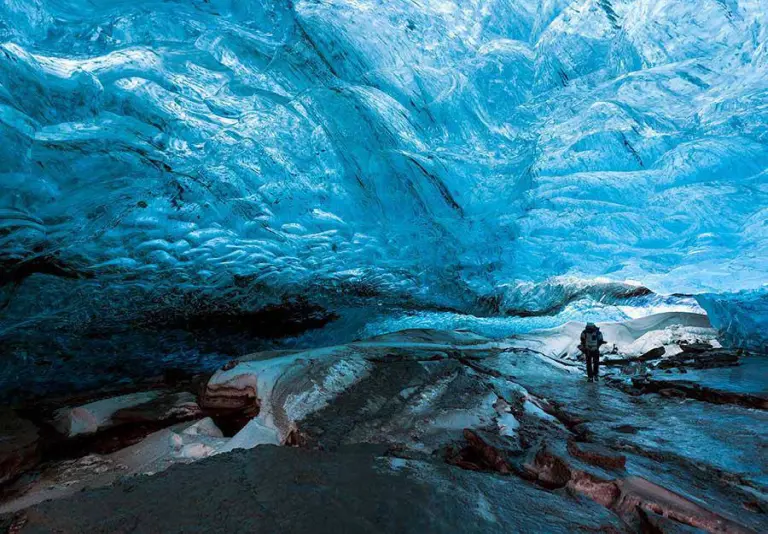
>> Silfra: The marvelous rift where two continents meet
Tips for the Ultimate Ice Cave Adventure
- Best time to visit: November to March, when the caves are safe and stable.
- Don’t miss: Pair your visit with a night of aurora hunting for the full Icelandic winter experience.
- Start at Vatnajökull National Park: Drive through glacial landscapes before beginning your guided hike.
- Dress warmly: Winter gear, waterproof boots, and thermal layers are essential — the chill is part of the adventure.
- Consider glacier hiking: Many visitors combine ice cave exploration with guided glacier treks for a full-spectrum thrill.
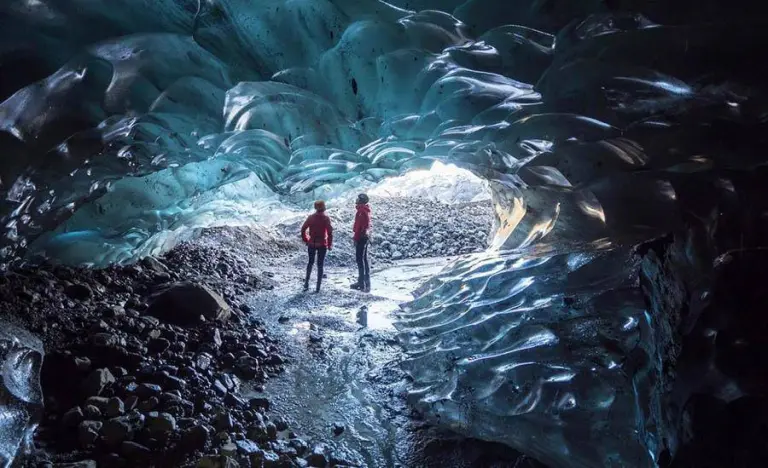
Exploring Iceland’s crystal ice caves feels like entering a forgotten realm — untouched, mysterious, and impossibly beautiful. Whether you’re watching light dance across frozen walls or listening to the ancient groans of the glacier above, this surreal adventure will leave a lasting imprint. For an unforgettable journey into Earth’s icy heart, the caves of Vatnajökull are a must.
>> Hákarl: Iceland rotten Shark that tourists dare to eat
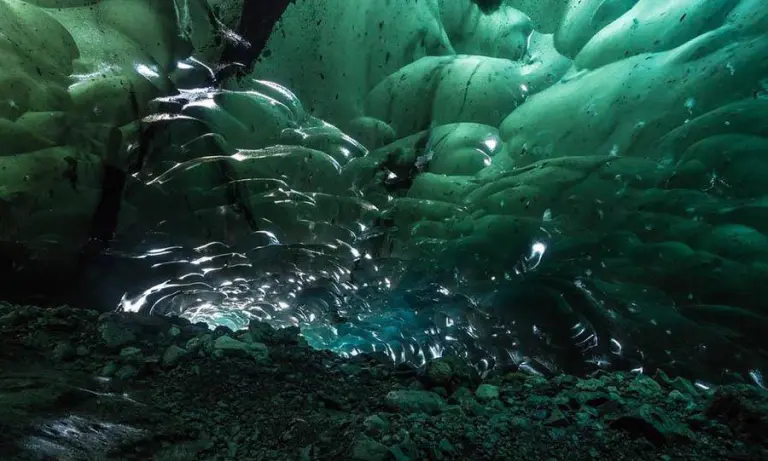
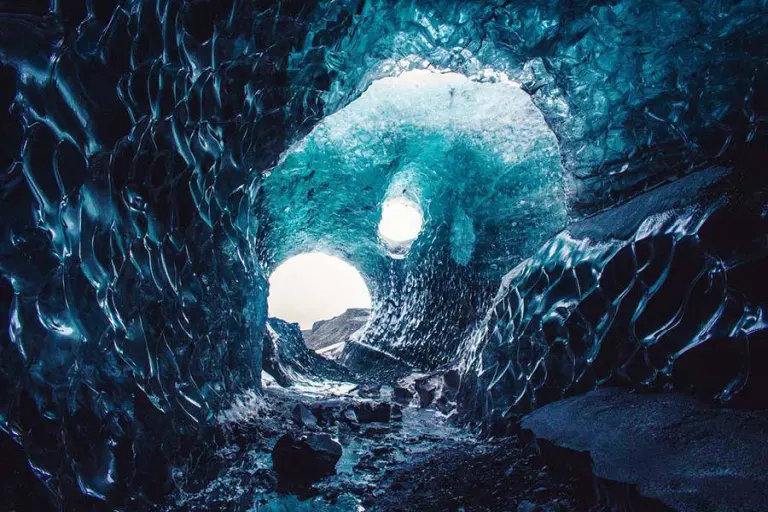
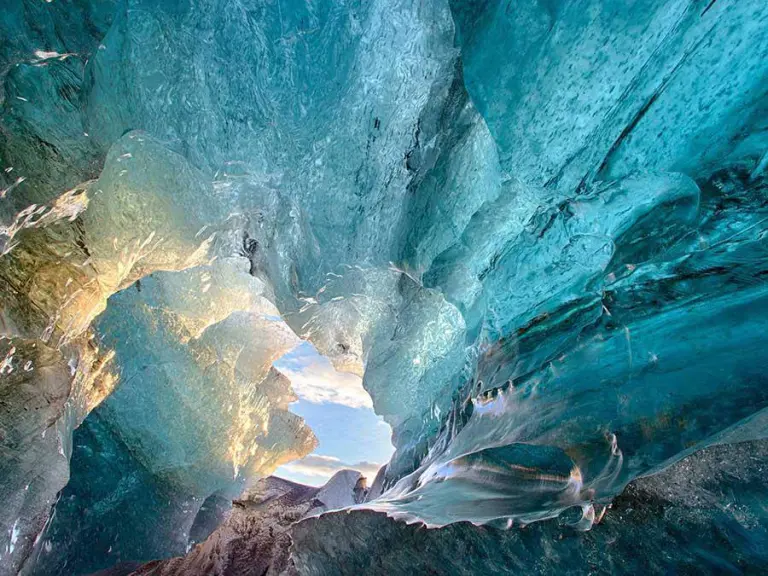
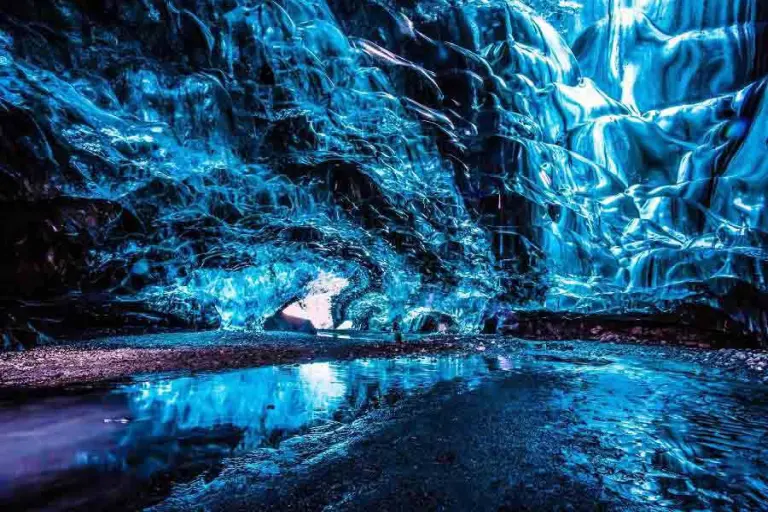
>> Fingal’s cave: Scotland’s mystical cathedral beneath the sea
FAQ
What are Iceland’s crystal ice caves?
Crystal ice caves are natural formations that develop beneath Iceland’s glaciers, especially during the winter months. As glacial ice melts and refreezes, it creates tunnels and caverns of pure ice. These caves reflect light in vibrant shades of blue, turquoise, and silver, offering a surreal, dreamlike atmosphere.
Why are they called “crystal” ice caves?
The name comes from the clarity and purity of the ice. Over time, glacial ice becomes extremely dense as air bubbles are compressed out. This density gives the ice a glass-like, crystal appearance — especially when sunlight shines through thin cave walls.
Where are the most famous ice caves in Iceland?
The most iconic ice caves are found in:
- Vatnajökull Glacier – Europe’s largest glacier, home to the most stunning and accessible ice caves
- Langjökull Glacier – Known for both natural and man-made ice cave experiences
- Mýrdalsjökull Glacier – Near the south coast and the volcano Katla
Vatnajökull’s crystal caves (especially in the Jökulsárlón region) are the most popular and frequently photographed.
When is the best time to visit?
Ice caves are only accessible in winter, typically from mid-November to late March, when temperatures are low enough to keep the caves stable and safe.
January and February are peak months for optimal conditions, photography, and safety.
Can I explore the ice caves on my own?
No. Never attempt to enter an ice cave without a certified guide.
These caves are constantly shifting and can be dangerous if not approached with caution and the proper equipment. Licensed glacier guides assess daily safety, provide helmets, crampons, and ensure a secure experience.
What’s the experience like inside an ice cave?
Stepping inside an ice cave feels like entering another world:
- The air is cold and crisp
- The walls shimmer in electric blue tones
- The silence is magical, broken only by the distant creaks of moving ice
- Some caves have ceilings several meters high, while others are narrow and intimate
- You’ll often walk on icy floors, climb through tunnels, and explore hidden chambers
It’s one of the most surreal and photogenic natural wonders you’ll ever encounter.
How difficult is the tour? Do I need to be super fit?
Most tours are designed for people of average fitness. You’ll typically:
- Take a 4×4 ride or super jeep across snowy terrain
- Hike 10–30 minutes on icy paths
- Enter caves with crampons and helmets provided by the tour operator
As long as you can walk confidently on uneven surfaces, you’ll be fine. Check with your tour provider for age or health restrictions.
What should I wear?
Dress warmly and in layers. Recommended:
- Thermal base layers (top and bottom)
- Waterproof outerwear (jacket and pants)
- Hiking boots (some tours offer boot rentals)
- Gloves, hat, neck warmer
- Sunglasses (sun reflects off ice and snow)
- Camera with wide lens – Ice caves are a photographer’s dream!
Are all ice caves the same?
Not at all! Ice caves change every year — in shape, size, color, and location. No two are ever the same. Some are:
- Vast and cathedral-like
- Narrow tunnels with glowing walls
- Formed under volcanic glaciers like Katla, adding steam and sulfur into the mix
This ephemeral nature makes each visit unique and unrepeatable.
Are ice cave tours safe?
Yes, as long as you go with a licensed tour company. Safety is taken very seriously in Iceland. Guides regularly inspect caves and cancel tours if weather conditions make them unsafe.
Listen to your guide, wear proper gear, and follow all instructions.
How much do ice cave tours cost?
Prices vary depending on location and tour length:
- Standard half-day tours: €100–€200 per person
- Premium or photography tours: €250+
- Some tours include glacier hikes or visits to nearby waterfalls and lagoons
Always book early — spots fill fast during peak season!
Can I combine ice cave tours with other activities?
Absolutely. Many ice cave tours are part of a South Coast itinerary, including:
- Jökulsárlón Glacier Lagoon
- Diamond Beach
- Skaftafell National Park
- Glacier hiking or snowmobiling
- Northern Lights chasing in the evening
It’s an unforgettable winter adventure from start to finish.
Iceland’s crystal ice caves are a reminder of how powerful, beautiful, and fleeting nature can be. These icy cathedrals carved by time are not just sights to see — they’re experiences to remember forever. If you’re planning a winter trip to Iceland, don’t miss this once-in-a-lifetime opportunity to walk through living ice.



